Carolinian Friends on the Berm 1
The Carolinian Zone may only make up 1% of Canada’s total land mass, yet it is bursting with more flora and fauna than any other ecosystem in the country. We who are privileged to live here in the most unique life zone must take care to acknowledge and respect that it is also the most endangered ecological zone in Ontario.
Did You Know?
“The Carolinian zone habitats and ecosystems include forests, tallgrass prairies and savannas, wetlands, shorelines, and other aquatic habitats. Fifty-eight of these ecosystem types is considered rare. Each of these ecosystems has a distinctive set of species.” Carolinian Canada
The Berm, the eastern headlands of the waterfront, is home to many Carolinian friends. Some of the following species you might have seen in the natural wetlands, others surveying the area for food, or migrating. The Berm has become part of our natural ecosystem.
Every day, Katey Berzins, a Port Stanley resident, takes photos on the waterfront lands and shares them with the community. Her pictures convey how nature is around us and more important how key a healthy ecosystem is for not only clean air and water but our well-being. The photos below are from Katey Berzins.
Green Frog
Green frogs find homes in permanent bodies of water and have done so in our ponds on the Berm.
Have you heard them croak?
Of course in the winter they hibernate in the mud at the bottom of the ponds.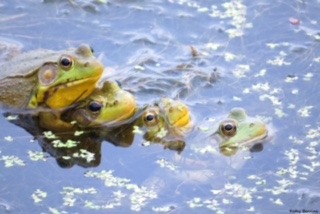
Ruddy Turnstones
They like to eat fly larva, beetles, snails and other aquatic insect larva. Our ponds are full of nutrients for the Ruddy Turnstones as they migrate through.
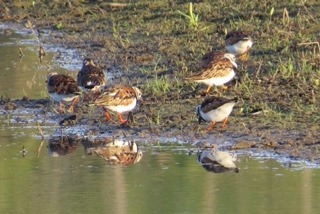
Killdeer
Killdeer nesting in the grasses close to the ponds so it can feed. They have a very high pitched call, very much like their name, “kideeer, kideeer”.
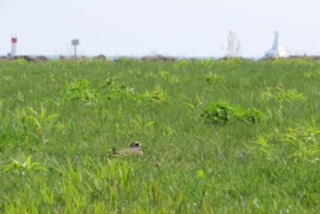
Blue Teal Ducks
Did You Know?
There are two types of ducks, Dabblers and Divers. Dabbling ducks have their “bottoms up” when they feed, while the Divers, dive below the water’s surface. Have a look next time when you are on the Berm wetlands to observe if the Blue Teal ducks are Divers or Dabblers.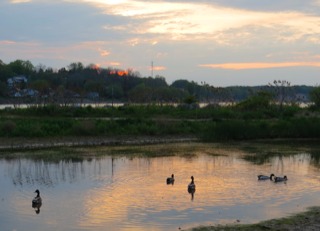
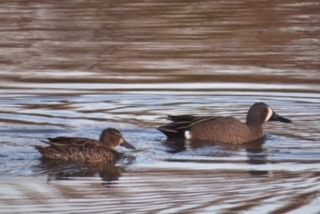
Green Herons
It is easy to admire this Green Heron perched on the rocks enjoying the tranquility of the Berm.
Did You Know?
A Green Heron likes to eat minnows, aquatic insects, frogs and tadpoles. They are solitary creatures that like to live near small bodies of water. They must like our wetlands.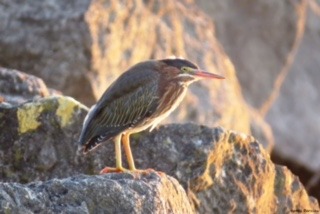
The Great Blue Heron
The Great Blue likes to wade in shallow water to feed on fish and other prey.
Did You Know?
The Blue Heron symbolizes “self-reliance and self-determination.” In the Native American tradition, those with the Blue Heron spirit, hold wisdom and strength.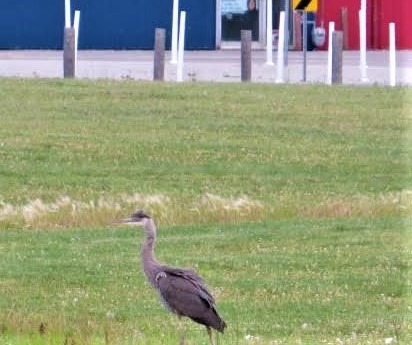
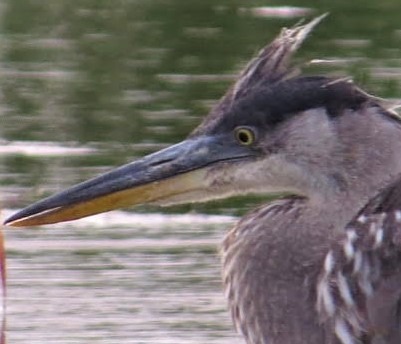
Click here to read part 2 of this essay
Carolinian Friends on the Berm 2 | Port Stanley Village Association Inc. (psva.ca)
| File | Uploaded | |
|---|---|---|
Pages
- Home
- Join the PSVA
- Latest news
- Candidate submitted information
- Community events calendar
- Resources for residents
- History of Port Stanley
- Photo gallery
- Activities and issues
- Development - harbour/core
- Harbour divestiture and remediation
- Secondary Plan/Natural Hazards
- Harbour Parks committee
- Waterfront Master Plan
- Prespa development on William St.
- Development - general
- Affordable Housing
- Domus - The Landings/Extendicare
- Heritage Conservation District
- Official Plan - Central Elgin
- Official Plan - Elgin County
- Wastell - Kokomo Beach Club
- PSVA events and fundraising
- Fundraising committee
- Seniors
- Age-friendly communities
- Seniors housing and aging in place
- Working with Kettle Creek School
- Introduction
- What would the berm want to be.....
- Caring for the Carolinian community
- Carolinian Friends on the Berm 1
- Carolinian Friends on the Berm 2
- Dune Study
- Building our Future
- Eco Class Art Auction
- Board of Directors/Officers
- PSVA committees
- Financials and minutes
- Contact us


